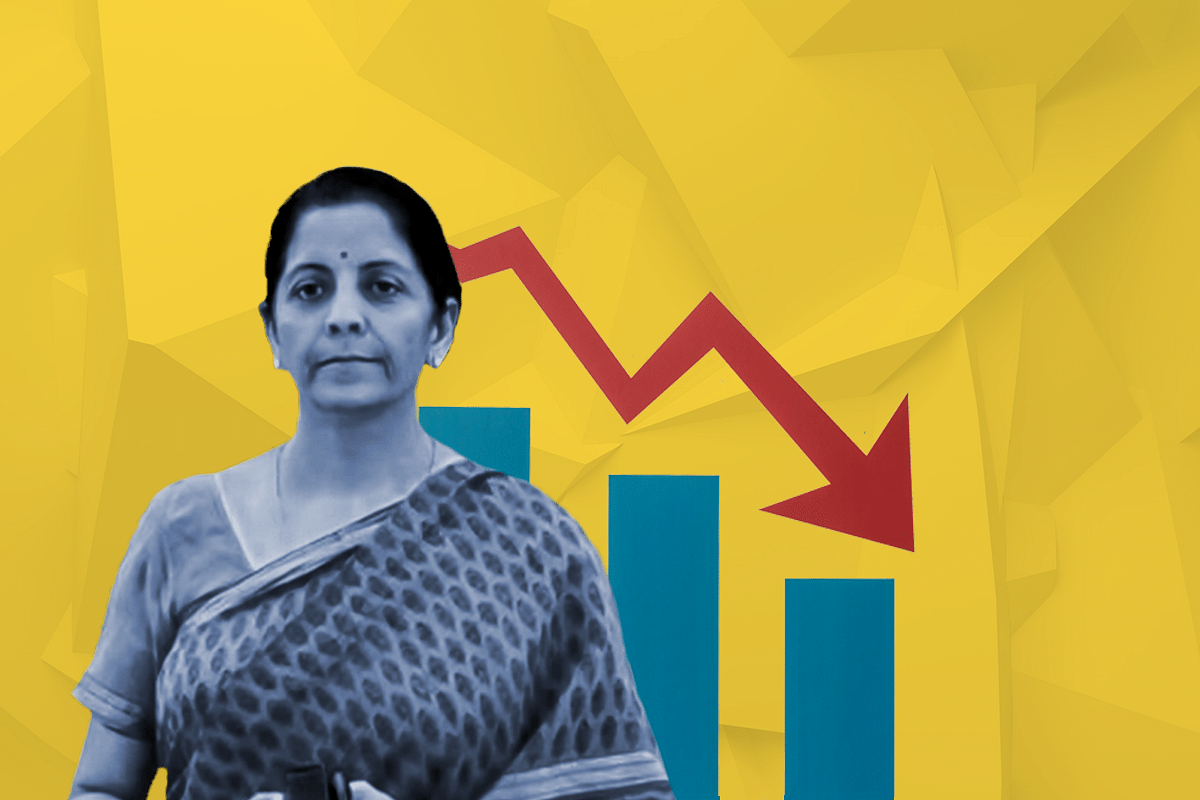Economy
No Time Like Now To Fix GST: As GDP Slows, Focus Must Be On Revival And Rate Cuts, Not Revenue
- There is no better time to run a higher fiscal deficit than when yields are low, growth is flagging, and private investment and consumption are both weak.
- This year, revival should top the agenda, not revenue growth.

Finance Minister Nirmala Sitharaman should now focus on revival of growth.
More than any sectoral revival measure announced by the Centre, what happens with the goods and services tax (GST) as a whole matters more for reversing the slowdown this year than anything else. In this context, what happens at the next GST Council meeting on 20 September is crucial to aiding the Finance Ministry’s own efforts to get business sentiments up.
As far as the Finance Ministry is concerned, reducing corporate taxes to 25 per cent for all companies, and implementing the new Direct Taxes Code (DTC), presumably with lower tax rates and brackets, should be priority No 1. This can be implemented immediately, without waiting for the next budget date. Short-term revenue considerations should not delay the DTC.
But it is product taxes that hold the key to reversing the slowdown. The Economic Times reports that the fitment panel in the GST Council is working out the revenue loss implications if some items were to be moved down the scale on tax rates. Among the sectors demanding rate cuts are automobiles, consumer durables, and real estate and construction.
The report suggests that if the cess is eliminated and the rate brought down to 18 per cent for automobiles, the revenue loss could be in the range of Rs 50,000-Rs 60,000 crore. If rates are cut for cement (from 28 per cent to 18 per cent), the revenue loss would be Rs 13,000-Rs 15,000 crore.
This is, of course, linear thinking, and presumes that volumes will not grow when rates are cut. But in the short-term, a drop in revenues cannot be ruled out.
If all rates are to converge towards three rates, and finally a single rate, that single mid-point rate needs to be identified first. If it is 18 per cent, so be it. Ideally, it should be lower, say, around 15 per cent. If that is the case, it is more logical to move the entire rate structure down by one or two percentage points rather than trying to help one sector or the other. Moving rates sector by sector will result in more anomalies, not less. This will make the job of rate convergence tougher in the medium term.
Secondly, the objective, especially in the short run, should not be revenue neutrality. When you are in the midst of a cyclical-cum-structural slowdown, there is no harm in running a higher fiscal deficit this year or even the next. The only thing to be ensured is that the increase in deficit spending goes entirely towards creating infrastructure and investment, not consumption and freebies.
If these broad principles are accepted, it follows that the GST Council must steadily move the rate structure towards its logical middle rate, and the short-term dip in revenues can be bridged by running a higher fiscal deficit this year and the next.
There is no better time to run a higher fiscal deficit than when yields are low, growth is flagging, and private investment and consumption are both weak.
This year, revival should top the agenda, not revenue growth.
Introducing ElectionsHQ + 50 Ground Reports Project
The 2024 elections might seem easy to guess, but there are some important questions that shouldn't be missed.
Do freebies still sway voters? Do people prioritise infrastructure when voting? How will Punjab vote?
The answers to these questions provide great insights into where we, as a country, are headed in the years to come.
Swarajya is starting a project with an aim to do 50 solid ground stories and a smart commentary service on WhatsApp, a one-of-a-kind. We'd love your support during this election season.
Click below to contribute.
Latest